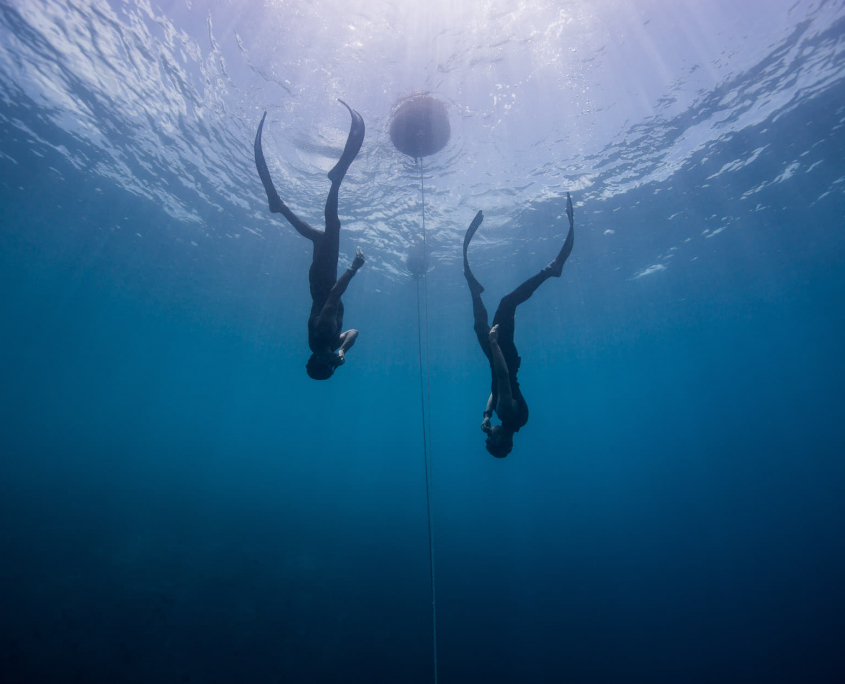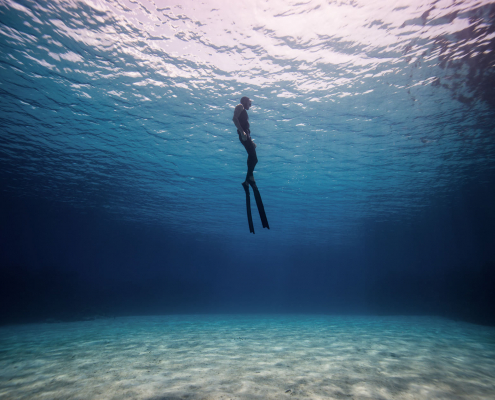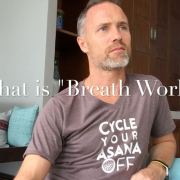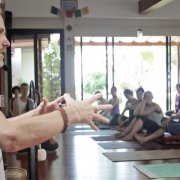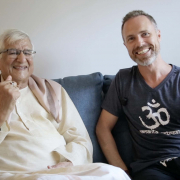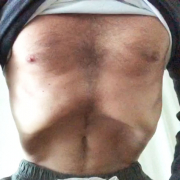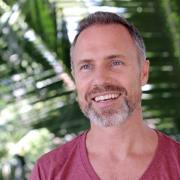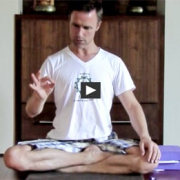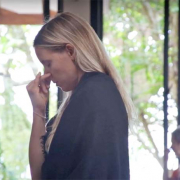 https://samahitaretreat.com/wp-content/uploads/2019/06/Pranayama-Explained-screenshot.jpg
463
1000
Samahita Team
http://samahitaretreat.com/wp-content/uploads/2024/01/samahita-logo-v2.svg
Samahita Team2019-06-19 07:01:342023-11-02 04:45:32Pranayama Explained with Sri. O. P. Tiwari – Video
https://samahitaretreat.com/wp-content/uploads/2019/06/Pranayama-Explained-screenshot.jpg
463
1000
Samahita Team
http://samahitaretreat.com/wp-content/uploads/2024/01/samahita-logo-v2.svg
Samahita Team2019-06-19 07:01:342023-11-02 04:45:32Pranayama Explained with Sri. O. P. Tiwari – VideoExploring the Breath, In and Out of the Water
Freediving Populations
Human populations have a long history of exploring the breath underwater. For example, Ama divers, in Japan, have used long breath-holding techniques to harvest shellfish and seaweed at depths of twenty meters for more than 2000 years. Sea nomads, namely the ‘Bajau Laut’ are also skilled divers, who live a semi-aquatic existence in the Indonesian archipelago. In a typical day, they may spend up to 10 hours in the water. The Bajau people give birth in the water and their children learn to dive before they walk on land. Natural freedivers, armed with a spear, they fish at depth for minutes at a time, all on one breath [1] [2]. Above all, this ability to skillfully move underwater on one breath requires mental preparation. One must focus the mind on the experience of the breath, or absence of breath for that matter, and be completely relaxed while making these extended holds.
Researchers have shown that we modern humans share the same physiological qualities necessary for long breath-holds under the sea. For example, Schagatay and her colleagues found no obvious difference between the Ama divers in Japan and Swedish freedivers in their breath-holding skills and diving responses. So, it’s not a matter of specialized genes. The diving response can be practiced and trained [3].
Physiological Effects of Freediving
As soon as your face goes underwater, your vagus nerve triggers a series of adjustments in your autonomic system. Your heart rate slows down, a process known as bradycardia, as does your metabolism, both allowing your body to conserve much needed oxygen. The colder the temperature of the water, the stronger the response. Your blood vessels also narrow, a process known as peripheral vasoconstriction, which diverts blood from the hands and feet towards the heart and brain. And as you go deeper underwater, the increased pressure squeezes your spleen to produce extra hemoglobin, a protein which carries oxygen in the body. Additionally, as you increase depth past eighty meters, a surprising physiological discovery starts to occur, which defied the reasoning of physics. Some of your blood shifts and forms a thin layer around your lungs, making a protective barrier, which prevents your alveoli from collapsing down [4].
Also, when you hold your breath, blood oxygen levels decline while carbon dioxide levels rise. This stimulates a small cluster of chemoreceptors located in your bilateral carotid bodies, which runs along your neck. This sends messages about the state of the circulating blood to the brain centers regulating neural outputs to the heart and circulation, further establishing the parasympathetic, slowing effects on the heart [4]. The same effect may be experienced when we experience breath holds. This effect is further increased during seated breath retention when we commonly tilt our chin down towards our chest in Jālandhara bandha. When are inverted, diving down deep, head first under water, we tend to naturally assume this position of a tucked in chin, as it is more streamlined and hydrodynamic.
These changes to our physiological system underwater, called the mammalian diving reflex, is something that we do naturally as babies. It allows us to swim underwater until we are 6 months old. And it is something that we share with aquatic mammals, such as: dolphins, seals, otters, muskrats and beavers; as well as diving birds, like ducks and penguins. Because they are able to conserve oxygen so well, many of these species can breath-hold for up to an hour at a time [1].
Introspective Side of Freediving
So why explore this underwater world on one breath?
Some free divers will mention the calm mental quality that it fosters, the greater awareness of the body, breath and mind. There is a relaxing quality to feeling buoyant and weightless while defending in the ocean, especially when one goes past their buoyancy and starts to experience the sensation of free fall. It also allows for a quiet way to interact with aquatic life around you. A new world to discover, within and without.
As in pranayama, or breath work, when exploring the nature of breathing, in freediving you want to have the body feeling as relaxed and effortlessly supported as possible. Being in water allows you to identify different areas of your body that may be unnecessarily tense. You may begin to have another level of awareness to your response to a breath-hold, to your ability to dive and feel at ease, to use the minimum about effort and oxygen possible in any movements, to become more familiar with your diaphragm, in particular tuning into its flexibility and contractions and overall breathing mechanics. Diving down a simple line to different depths lets you experience your body in a new way, and opens you to a new underwater world. And yet, familiar patterns, habits, thoughts, and fears may start to rise in this new context, which can give insights into your mind’s inner workings. But more than anything, exploring breath, either in or out of the water, encourages a focused mental state, where you can watch and fully tune in and be present to the moment you are in. In this experience, you have to confront the danger of distraction, it surrounds you and is unavoidable.
Increased Breath Awareness
This heightened state of presence can last throughout the day. Back on land, you can appreciate the nourishing quality of breath on another level. Taking time to tune into your breath and simply slow it down has many parasympathetic, relaxing, effects on your body. If you notice your breath becomes short, shallow or rushed, at any point, simply taking in a slow, deeper inhale and exhale can provide an immediate change to your system.
Slowing down to a rate of six breaths per minute, may trigger the body to widen blood vessels and calm the heart rate. A long, slow exhalation also stimulates the vagus nerve, which links your brain to your lungs, heart, digestive tract and internal organs, and subconsciously soothes you down after a stressful, fearful or dangerous event. The more toned your vagus nerve response, the more readily you may enter into a parasympathetic (rest, feed and breed) state then stay in a triggered sympathetic (fight or flight) response. When you breathe slowly, the nerves inside your nose fire signals in a slower rhythm, and parts of your brain are prompted to do the same. Recent research is showing that slowing your breath to the low rate of three breaths per minute can increase theta brainwaves, which mimics a state of deep, slow-wave sleep. Being in this state may leave you feeling more introspective, at ease, calm, and ready to respond to the full, beautiful life events in front of you.
Breath is such a vital function. So taking a few moments to regain yourself, relax, slow down, tune in, readjust and center, is well worth it, whether on land, or when you are about to dive deep.
New Freediving & Yoga Retreat
Explore the breath more in and out of the water in our newest retreat at Samahita. Our resident yoga and pranayama teacher Sarah Pierroz and the co-founder of the longest running Freediving School in Asia, Monica Ganame are bringing their passion and years of experience together. They are offering a novel Yoga, Static Apnea and Freediving Retreat at Samahita Retreat, on Koh Samui and then through Apnea Total Headquarters, on Koh Tao, May 2-6, 2020. For more information about the retreat:
https://samahitaretreat.com/retreat/yoga-static-apnea-freediving-retreat-2020/
Read More:
- https://www.bbc.com/news/science-environment-12151830
- http://miun.diva-portal.org/smash/record.jsf?pid=diva2%3A681694&dswid=-7954
- https://www.newscientist.com/article/mg16922844-400-into-the-abyss/#ixzz6Anhd2wL4
- https://pubmed.ncbi.nlm.nih.gov/23997188
- https://www.newscientist.com/article/mg24532640-600-how-to-breathe-your-way-to-better-memory-and-sleep/#ixzz6Ai4yrGSz
More from the Samahita Blog
